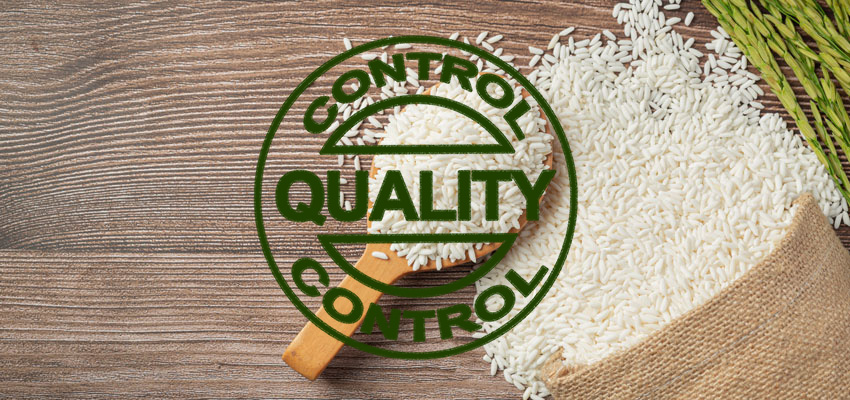Regulation (EU) 2019/1793 regulates the frequency of official controls on imports of certain foodstuffs into the EU. With the current amending , (https://eur-lex.europa.eu/legal-content/EN/TXT/PDF/?uri=CELEX:32023R1110 ) various adjustments to the control plan were published, which apply from 27.6.
Here is a selection of the current risk profile-based regular import controls. It can serve as a suggestion for adapting internal inspection plans.
We have limited ourselves only to what we consider to be important import goods and countries of origin. In addition to fruit and vegetables, other product groups that may be of interest to our customers are also taken into account.
Annex I of Regulation (EU) 2019/1793 lists the food (and feed) products that are subject to increased official routine controls. Annex II lists the products subject to emergency measures outside routine controls. The annexes are reviewed every 6 months and adapted if necessary. Ultimately, they reflect the experience gained from the alerts in the RASFF system with a time lag.
|
New entries (Annex I) |
|||
|
Food |
KN Code |
Country of origin |
Reason / frequency |
|
Sugar apple |
ex 0810 90 75 |
Egypt |
Pesticides / 20 % 3) |
|
Cumin seeds |
0909 31 00 |
India |
Pesticides / 20 % 3) |
|
green papaya (Carica papaya) |
0807 20 00 |
Mexico |
Pesticides / 20 % 3) |
|
Tahini and Halva made of sesame seeds |
ex 1704 90 99 |
Syria |
Salmonella / 20% 2) |
|
Extension of scope of inspection and/or change in inspection frequency (Annex I) |
|||
|
Food |
KN Codes |
Country of origin |
Reason / frequency |
|
Groundnuts and products produced from groundnuts |
various |
Egypt |
Aflatoxins / 30% ⇑ |
|
Sweet peppers (Capsicum annuum) and peppers of the genus Capsicum (other than sweet |
0709 60 10 |
Egypt |
Pesticides / 30% ⇑ 3),6) |
|
Gotu Kola (Centella asiatica) |
ex 1211 90 86 |
Sri Lanka |
Pesticides / 50% ⇑⇑ 3) |
|
Pomegranates |
ex 0810 90 75 |
Turkey |
Pesticides / 30% ⇑ 3) |
|
Guaves |
ex 0804 50 00 |
India |
Pesticides / 30% ⇑ 3) |
|
Mukunu-Wenna (Alternanthera sessilis) |
ex 0709 99 90 |
Sri Lanka |
Pesticides / 50% ⇑⇑ 3) |
|
Oranges |
ex 0805 10 |
Egypt |
Pesticides / 30% ⇑ 3) |
|
Turkey |
Pesticides / 30% ⇑ 3) |
||
|
Rice |
1006 |
India |
Pesticides / 10% ⇑ 3) |
|
Drumsticks (Moringa oleifera) |
ex 0709 99 90 |
India |
Pesticides / 20% ⇑ 3) |
|
Transfer of products from Appendix II into Annex I |
|||
|
Food |
KN Codes |
Country of origin |
Reason / frequency |
|
Peppers of the genus Capsicum (sweet or other than sweet |
0709 60 10 |
Dom. Republic |
Pesticides / 50% 3) |
|
India |
Pesticides / 10% 3) |
||
|
Peppers of the genus Capsicum (other than sweet) |
ex 0709 60 99 |
Pakistan |
Pesticides / 20% 3) |
|
Mixtures of food additives containing locust bean gum or guar gum |
ex 2106 90 92 ex 2106 90 98 ex 3824 99 93 ex 3824 99 96 |
India |
Pesticides / 20% 9) |
|
Guar gum |
ex 1302 32 90 |
India |
Pesticides / 20% 13) |
|
Pentachlorophenol & Dioxins / 50% |
|||
|
Locust beans (carob), locust beans seeds, not decorticated, crushed or ground, and mucilage and thickeners, whether or not modified, derived from locust beans or locust beans seeds |
various |
India |
Pesticides / 20% 13) |
|
Turkey |
|||
|
Groundnuts and products produced from groundnuts |
various |
Gambia |
Aflatoxins / 50% |
|
Sudan |
|||
|
Instant noodles containing spices/seasonings or sauces |
|
South Korea |
Pesticides / 20% 13) |
|
Vietnam |
|||
|
New entries (Appendix II) |
|||
|
Food |
KN Codes |
Country of origin |
Reason / frequency |
|
Pistachios and derived products |
various |
USA, via Turkey imported to EU |
Aflatoxins / 50% |
|
Transfer of products from Annex I into Annex II |
|||
|
Food |
KN Codes |
Country of origin |
Reason / frequency |
|
Unprocessed apricot kernels |
|
Turkey |
Cyanide /50% |
Footnotes and numbering cited according to the regulation:
2 ) The sampling and the analyses shall be performed in accordance with the sampling procedures and the analytical reference methods set out in point 1(b) of Annex III
3) Residues of at least those pesticides listed in the control programme adopted in accordance with Article 29(2) of Regulation (EC) No 396/2005 of the European Parliament and of the Council of 23 February 2005 on maximum residue levels of pesticides in or on food and feed of plant and animal origin and amending Council Directive 91/414/EEC (OJ L 70, 16.3.2005, p. 1) that can be analysed with multi-residue methods based on GC-MS and LC-MS (pesticides to be monitored in/on products of plant origin only).
(9 &13) Residues of Ethylene Oxide (sum of ethylene oxide and 2-chloro-ethanol, expressed as ethylene oxide). In case of food additives, the applicable MRL is 0,1 mg/kg (LOQ). Prohibition of use of Ethylene Oxide provided for in Regulation (EU) No 231/2012 of 9 March 2012 laying down specifications for food additives listed in Annexes II and III to Regulation (EC) No 1333/2008 of the European Parliament and of the Council (OJ L 83, 22.3.2012, p. 1).
We have not listed deletions in Annex I.
Links: and the immediate thereof.
Author: Dr. Frank Mörsberger

 Contact
Contact

 Contact
Contact Career
Career